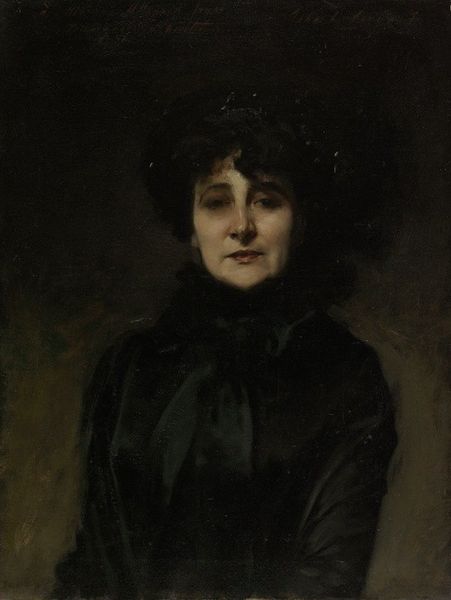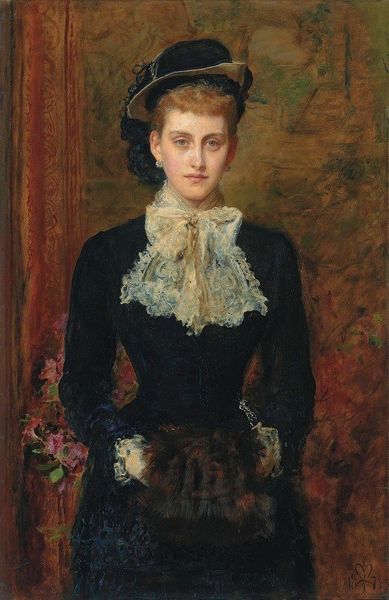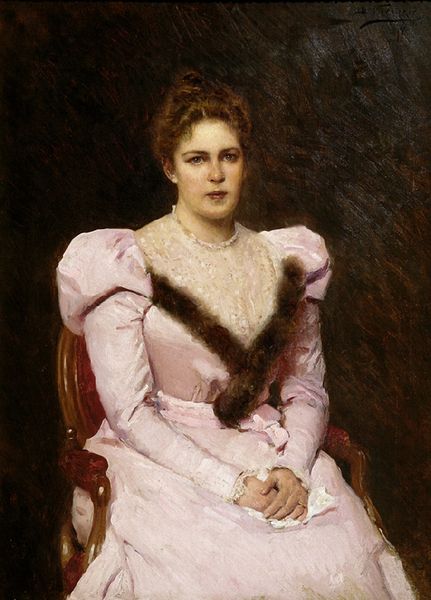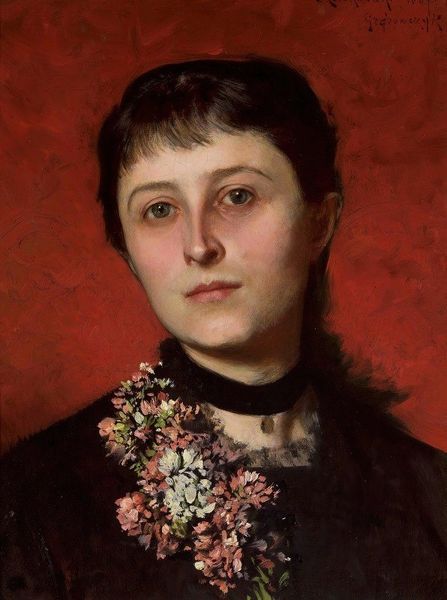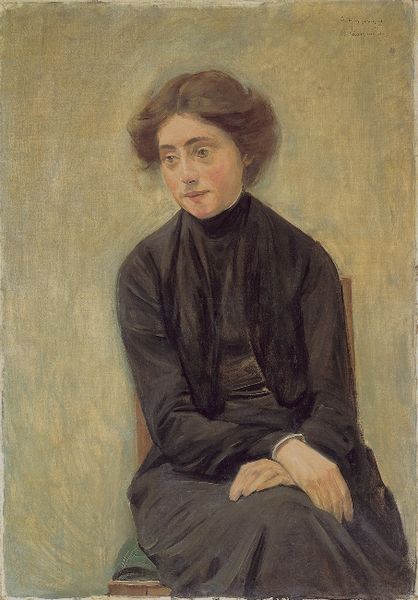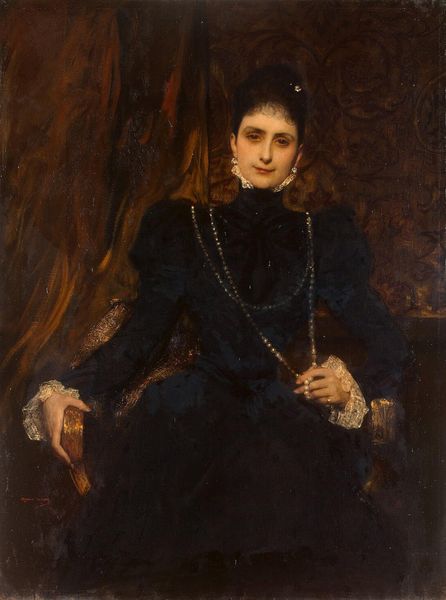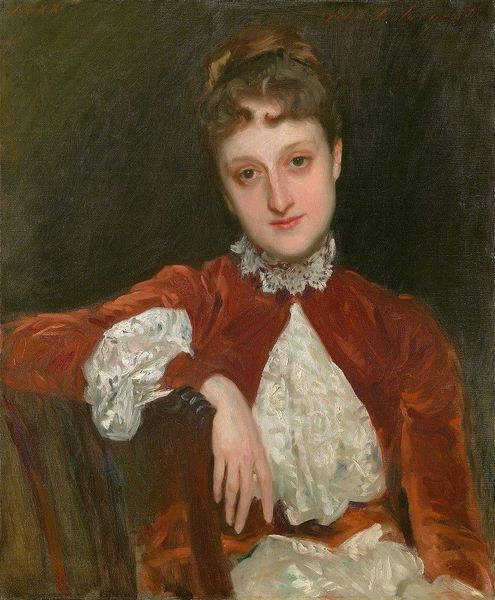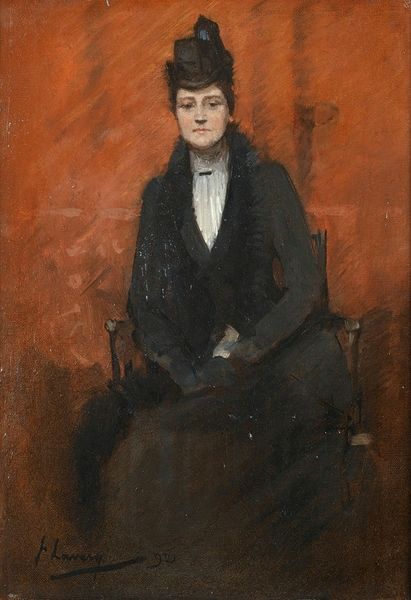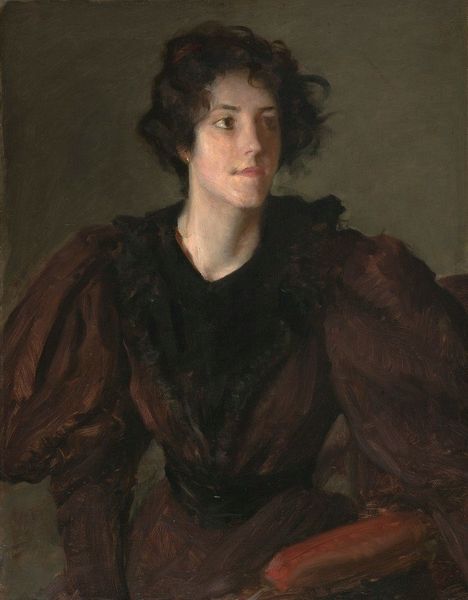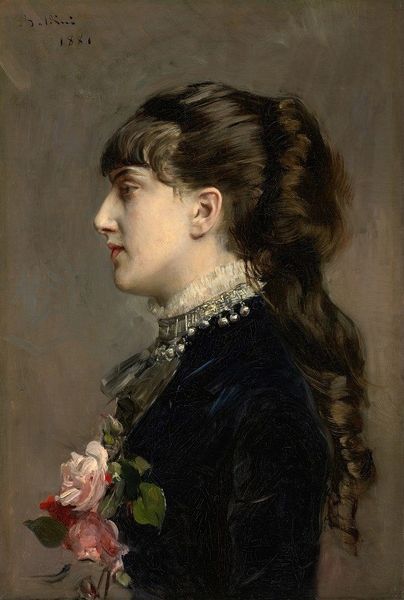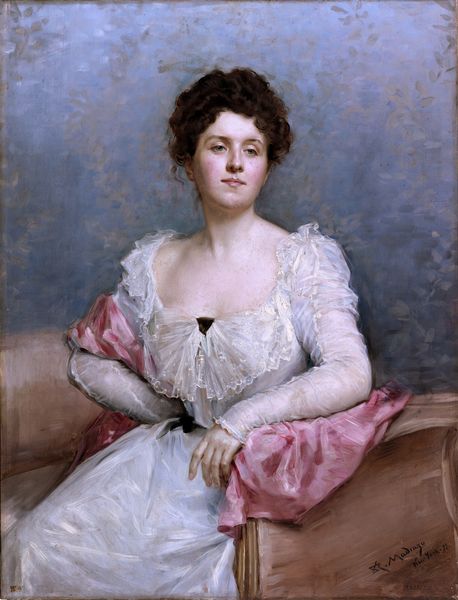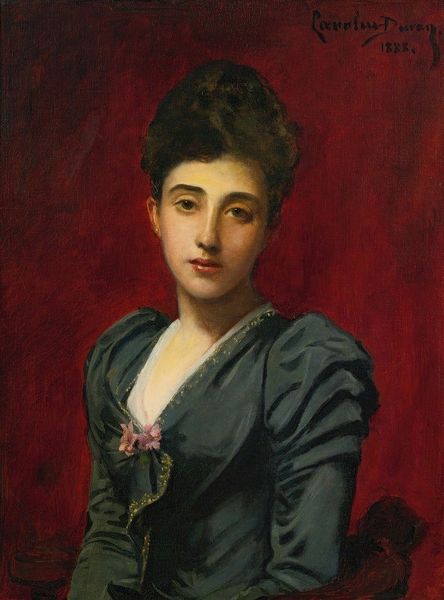
Copyright: Public Domain: Artvee
Curator: Let's discuss Ilya Repin's "Portrait of Jelizaveta Zvantseva," created in 1889 using oil on canvas. Editor: Immediately, the portrait strikes me with its somber and reflective mood, particularly in the play of shadow across Zvantseva’s figure. The restrained palette is very effective. Curator: Indeed. The painting’s formal composition employs a fairly restricted range of colors, predominantly earth tones that create tonal harmony. Note how the red background provides a grounding contrast to the black dress. The figure's placement and the overall lighting suggest a focus on the face. Editor: And what a face. The gaze is direct, but with a hint of melancholy. Given that Zvantseva herself was an artist, perhaps the darkness of the clothing and setting represent a form of internal artistic struggle, or the societal constraints she might have faced? Black, after all, often signals grief, formality, or perhaps even hidden depths. Curator: It could also represent an attempt to emphasize the model's intellectual depth and character, over flamboyant appearance. However, I note that the texture Repin achieved gives depth and detail through subtle brushwork. You will see, when observing it closely, he has avoided the potential pitfall of heavy blocks of unmodulated black by introducing the varied brush strokes in a lighter, more delicate style than, say, his treatment of the background. The treatment here reflects not just an aesthetic, but, perhaps, Zvantseva's intellectual life and engagement with avant-garde circles at the time. Editor: That adds layers. Maybe that small jewel on her collar, and her subtle bracelet, are small signs of individual expression that offset what might have been quite severe strictures. Her jewelry and subtle smile could denote repressed, subversive energies bubbling to the surface? Curator: Perhaps. Ultimately, I read this painting as testament to Repin’s engagement with depicting not just surface likeness but exploring psychological depth. Editor: Agreed. What seemed simple at first reveals a network of understated tensions between light, shadow, expression, and symbolic adornments that adds an interesting historical nuance.
Comments
No comments
Be the first to comment and join the conversation on the ultimate creative platform.
